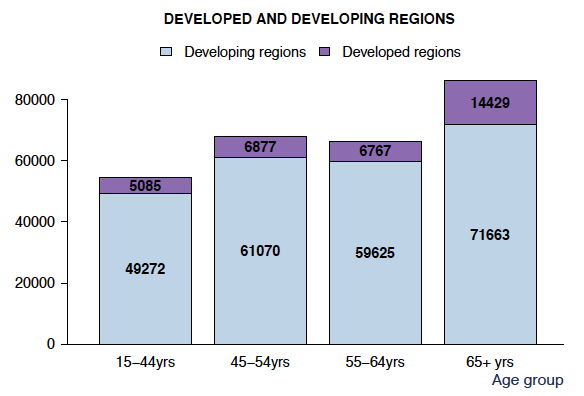 What are the Cervical Spondylosis Symptoms? March 3rd, 2011 – No Comments – Category: Types of back Pain
What are the Cervical Spondylosis Symptoms? March 3rd, 2011 – No Comments – Category: Types of back Pain
When the cartilage and bones of the neck experience wear and tear, a disorder known as cervical spondylosis occurs. the disks like structures between the vertebras of the spine also face degeneration along with the bones of the cervical spine. Cervical spondylosis symptoms are prevalent in aged people above the age of 60 years in both men and women. Severe arthritis, surgery in the spine and injury of the neck are some of the other factors which can lead to the development of this condition.
If the signs of the condition are ignored initially, the degeneration can progress to the spine. By this stage, the functioning of the arms and legs also get affected. the spine contains nerves of the nervous system through which the signals of motor functions are sent to the brain for their processing.
Cervical Spondylosis Symptoms:
- Stiffness of the neck which worsens with the passage of time
- Neck pain which can spread to the arms and shoulders
- Lack of sensation in the limbs
- Abnormal sensation in the shoulders and limbs
- Headache at the back of the head
- Weakness of the arms and in very rare conditions it can be felt even in legs
- Loss of balance
- Loss of control over the bowels as the spinal cord gets compressed
The diagnosis of the above mentioned symptoms is done through physical examination. the patient reports of pain in turning the head towards the shoulder or rotating it. Reflexes are reduced. Weakness or loss of sensation implies that the nerves of the spinal cord or the roots of its nerves may be damaged.
The doctor may enquiry about the medical history of the patient to learn whether any injury was suffered in the location in past. after this initial diagnosis, other diagnostic tests are carried out to nail down the suffered condition to precision.
Conclusion: Spine magnetic resonance imaging, CT scan, EMG and X-rasy are some of the advanced diagnostic techniques to find cervical sponsylosis symptoms.
Tweet